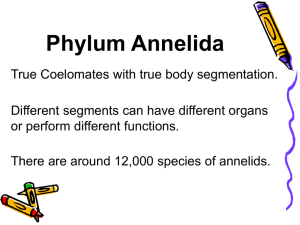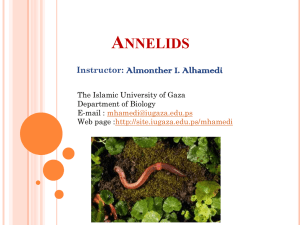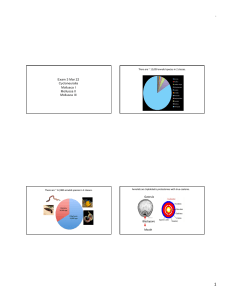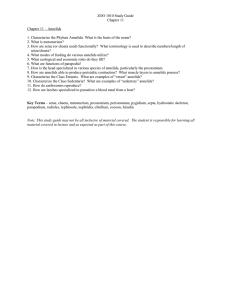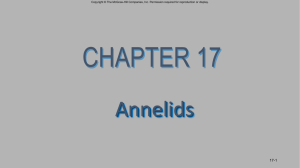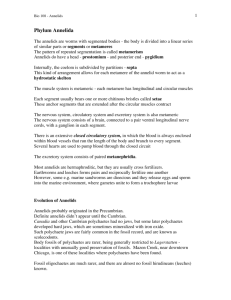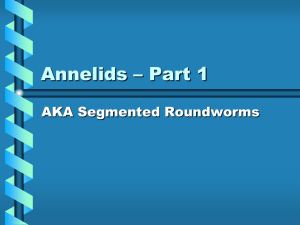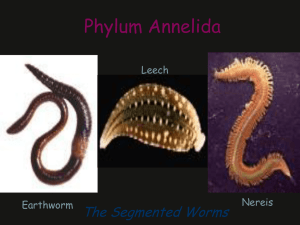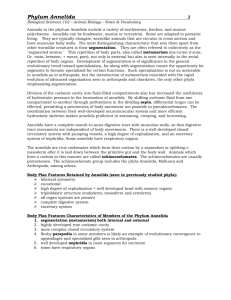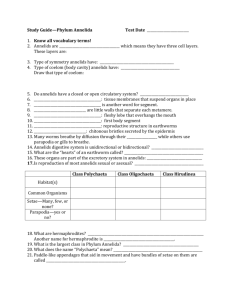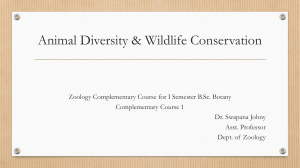B11Annelida - Science at NESS
advertisement
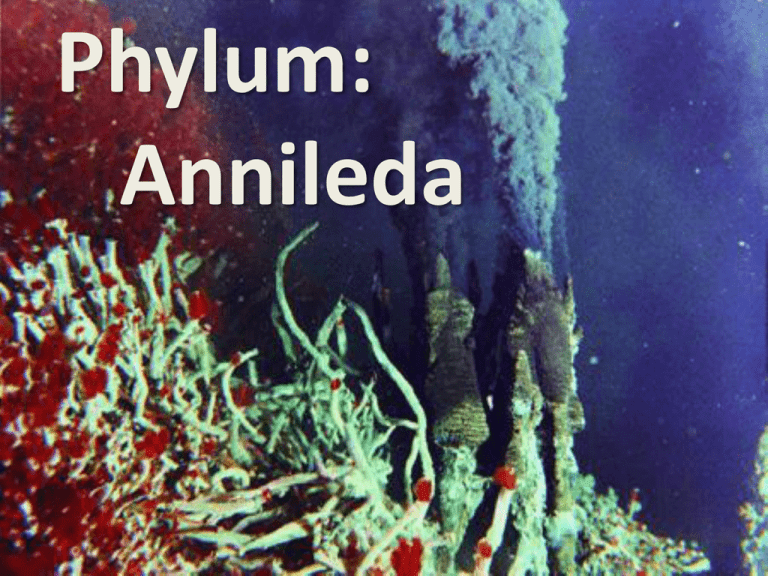
Phylum: Annileda Annelida Origin of the word Annelida: Latin for little rings Common Examples: Earthworms, tube worms, and leeches Symmetry: Bilateral Symmetry Type of body cavity: Coelom General Annelid Body Plan Characteristics of Annelids Segmentation: The formation of repetitive segments. Occurs in all phyla that evolved after. Each segment is divided by a septa Movement: Via contracting or expanding individual segments Characteristics of Annelids Closed Circulatory System: Flows through a system of tubes (Like our own) Hydroskeleton: Used to support the muscles (similar to nematodes). With annelids the muscles allow the segments to move individually. Characteristics of Annelids Digestive System: Composed of specialized organs. Two new organs 1) Crop: used to store food 2) Gizzard: used for mechanical digestion Excretory System Consists of two parts: 1) Excretory pore: Opening to the outside of the body. First found in platyhelminthes 2) Nephridium: Filters and collects waste products from blood and fluid in coelom. First seen in annelids carries on into mammals Polychaetes and Oligochaetes Class Polychaeta: Marine annelids. Groups of worms with many setae. Setae: Setae are found on parapodia Parapodia: Paddle like appendages. One pair per segment. Used for digging swimming and breathing Cephalization: sense Organs located on the head portion include eyes Oligochaetes Class Oligochaeta: Have few setae per segment. Including the earthworm Setae: Found on the ventral side. Used for digging. Muscle contractions in each segment move the setae like a paddle pushing it along the ground Parapodia: Lacking in oligochaetes Cephalization: No real head region Hirudinea Class Hirudinea: Parasitic annelids. Leeches Modifications: Suckers: One small sucker at the anterior end and a larger one on the posterior end. Lack setae: Move by swimming. Do not burrow. Or travel along the ground = lost setae over time Hirudin: A chemical released into the hosts blood to prevent the blood from clotting Anaesthetic : This chemical numbs the area where the leech feeds so the host doesn’t feel it. Medical Leeches Uses: Medical leeches are used during plastic and reconstructive surgeries. How does it work: - Reduce the swelling in the tissues by removing pooled blood - Assists with healing by allowing fresh oxygenated blood move in. Segmentation Evidence of segmentation in annelids 1) Rings on the outside of the body 2) Septa membranes with are found between segments inside the body 3) One pair of nephridia in most segments 4) Branching blood vessels in each segments 5) Ganglia and lateral nerves on each side 6) Setae on most segments • Shape Of Life 4/8 Explosion Of Life (PBS Documentary) • Start at ~25 min
